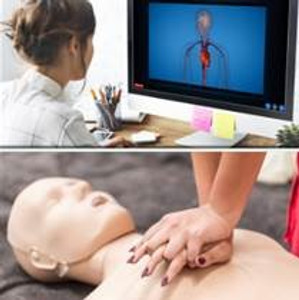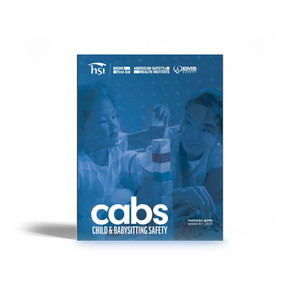HSI CABS Supplementary Info
Intended Audience
The HSI Child and Babysitting Safety (CABS) program is designed for teens and young adults interested in starting a babysitting business or who have the responsibility of caring for younger family members. It provides the essential skills and knowledge needed to ensure safety and proper care.
Certification Period
The certification is valid for two years from the month of issue, ensuring participants remain informed and prepared for childcare responsibilities.
Recommended Time to Complete
- Initial Training: Approximately 4 hours
- Successful completion is based on the achievement of core learning objectives rather than a fixed instruction time.
Instructor Materials
The HSI CABS program includes several instructional materials to support learning:
- CABS Instructor Guide: Provided for each instructor, available in print or digital format.
- CABS Slide Presentation: Includes embedded video for enhanced learning.
Student Materials
- CABS Student Book: Includes skill sheets and important information for successful babysitting.
Delivery Options
The training is available in two formats to suit different learning preferences:
- Traditional Classroom
- Blended Learning (combination of online and in-person skills training)
Online Portal Features
The HSI online portal provides tools to enhance learning and training management:
- Streaming and offline video presentation player
- Pre-built digital Performance Evaluations
- Tracking of past, present, and future classes
Student Certification Requirements
To achieve certification, students must meet the following criteria:
- Written Evaluation: Not required unless specified by organizational policy.
- Performance Evaluation: All students must perform the required skills competently without assistance.
Class Ratios
To ensure effective learning and hands-on practice, the class is structured with recommended and maximum ratios:
- Student-to-Instructor Ratio: Recommended 6:1, Maximum 12:1
Class Topics Covered
The HSI CABS course covers a wide range of topics essential for safe and effective babysitting:
- Becoming a Babysitter: Understanding the role and responsibilities of a babysitter.
- Preparing to Babysit: Learning to think like a babysitter, understanding babysitting business basics, and getting to know the family.
- Staying Safe: Techniques for staying safe on the job and ensuring supervision.
- Taking Care of Kids: Managing basic needs, hygiene, food preparation, diaper changes, playtime, behavior management, and bedtime routines.
- When Things Go Wrong: Recognizing problems, taking action, and understanding how to get help effectively.
- You Can Do It: Bringing all the learned skills together for confident babysitting.
Key Benefits of HSI Child and Babysitting Safety (CABS) Certification
The HSI CABS Certification program provides several key benefits:
- Comprehensive Training: Covers everything from business basics to safety, hygiene, and emergency response.
- Confidence Building: Equips young adults with the knowledge and skills to handle babysitting responsibilities confidently.
- Two-Year Certification: Valid for two years, ensuring long-term preparedness and reliability.
- Flexible Learning Options: Available in traditional classroom and blended learning formats to suit different learning needs.
- Interactive Learning: Includes engaging videos, skill sheets, and real-world scenarios for practical learning.
- Recognized Training: Developed according to the latest guidelines and best practices for child care and safety.







